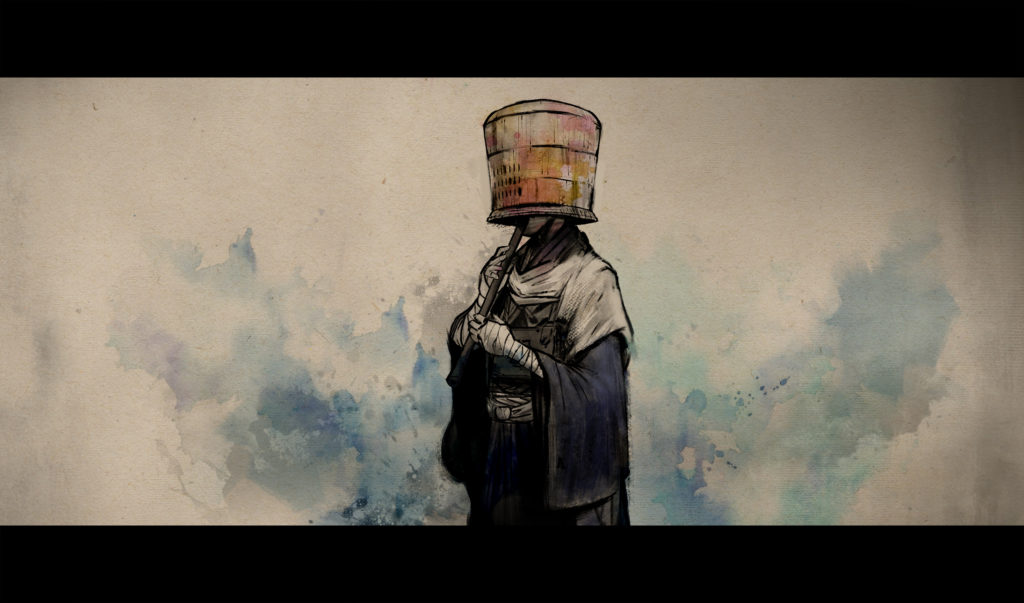
Few images are more distinctive than the iconic silhouette of the komuso monk. These mendicant monks traveled across Japan in the Edo period, begging for alms and observing the land. Their uniform consisted of a kimono, a woven basket worn over the head, and a traditional bamboo flute called a shakuhachi. During this period, they had a connection with the Fuke sect of Zen Buddhism.
The name “komuso” translates to “monk of emptiness.” Fittingly, these monks wore face-concealing baskets that represented removing the ego. The baskets also concealed the monks’ identities, which allowed them to move across Japan incognito. They played a collection of spare and tonal shakuhachi tunes as religious meditation and for alms.
Earlier komuso were poor beggars. However, in the Edo period, many ronin who could no longer serve as samurai retainers became komuso instead. Furthermore, samurai who committed crimes could join the Fuke sect and escape punishment. Later on, komuso had to be of samurai descent.
A 1614 feudal law supposedly approved by Tokugawa Ieyasu gave komuso permission to wander around Japan and gain knowledge. Reportedly, this was permitted because the monks could serve as an information network for the Tokugawa Shogunate.
It was later revealed that the document was a forgery. Despite this, the komuso continued to have ties to the shogunate, which forbade anyone but Fuke komuso to play the shakuhachi. The komuso lost their position as priests in the Meiji period. Their library of shakuhachi music has survived and can still be listened to today.
In Tale of Ronin, a network of wandering komuso monks seeks to gather and disseminate sensitive information about the Tokugawa Shogunate. They share hidden truths and cryptic warnings and act with a mysterious purpose. These monks will relay messages and try to guide the player to the distant south, where they claim ronin can once again live honorably and gloriously. However, only the player can decide how far to follow the komuso’s tempting words.